Portugal, a country where the sun warmly kisses the sea and history whispers in the cobbled streets, invites travellers to a journey filled with wonder. Here, every corner tells a story, from the grandeur of historic towers to the serenity of age-old monasteries.
As we explore Portugal’s must-see attractions, we’re not just visiting places; we’re stepping into a vibrant tapestry of culture, history, and natural beauty.
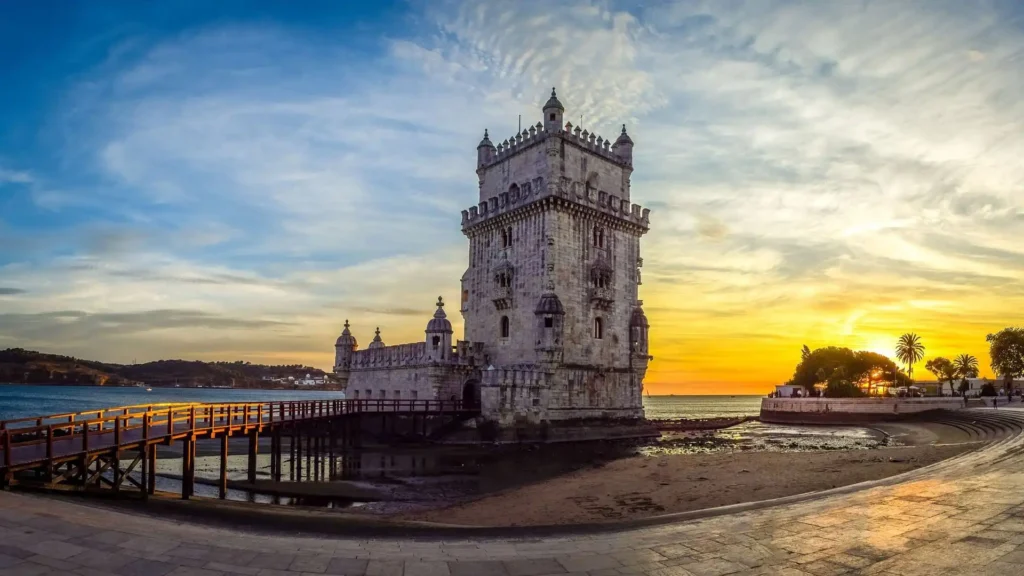
In the heart of Lisbon, standing proudly at the edge of the Tagus River, is the Torre de Belém. This tower, a sentinel watching over the city, is a monument to Portugal’s Age of Discoveries.
Its architecture is a celebration of the Manueline style, characterized by intricate stonework that seems to dance under the sunlight.
Visitors often marvel at the ornate carvings that adorn its exterior, depicting historical figures and symbols that tell the story of Portugal’s maritime glory.
Venturing inside the Torre de Belém, one is enveloped in history. Each floor, connected by narrow, spiralling staircases, offers a glimpse into the past.
The tower’s interior, though more austere than its elaborate exterior, speaks volumes about its defensive purpose. From the top of the tower, a breathtaking view awaits.
Gazing out, one can see the expanse of the Tagus River merging into the horizon, a view that once greeted explorers returning home.
The Torre de Belém is not just a historical monument; it is a beacon of Portuguese identity. It stands as a tribute to the explorers who ventured into unknown seas and represents the adventurous spirit of Portugal. A visit here is a journey through time, offering a deeper understanding of the country’s rich maritime history and its enduring legacy in the modern world.
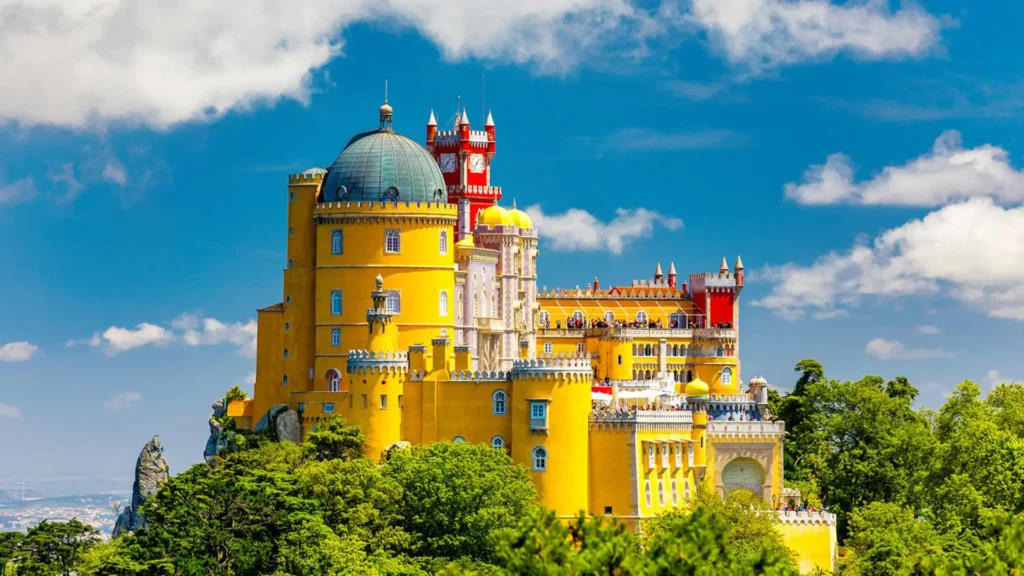
Rising above the town of Sintra, the Pena Palace is a burst of colour and architectural wonder.
Often shrouded in mist, this palace looks like it leaped out of the pages of a storybook. Its walls are painted in vibrant reds and yellows, and its turrets and domes add to its fantastical appearance.
The palace is an outstanding example of Romanticism, with its eclectic blend of architectural styles, including Gothic, Manueline, Moorish, and Renaissance influences.
The interior of Pena Palace is as captivating as its exterior. Each room is uniquely decorated, reflecting the tastes and interests of King Ferdinand II, who commissioned the palace.
The lavish staterooms and intimate chambers are adorned with exquisite furniture, tapestries, and artworks. Walking through these rooms, one feels transported to a bygone era of royal extravagance and artistic expression.
Surrounding the palace is a park equally deserving of exploration. This lush, forested area is dotted with hidden pathways, charming pavilions, and exotic plants from around the world.
The park offers not just a serene escape from the busy world but also stunning views of the palace itself. A visit to Pena Palace and its park is a journey through a dreamlike landscape, where art and nature blend in perfect harmony.
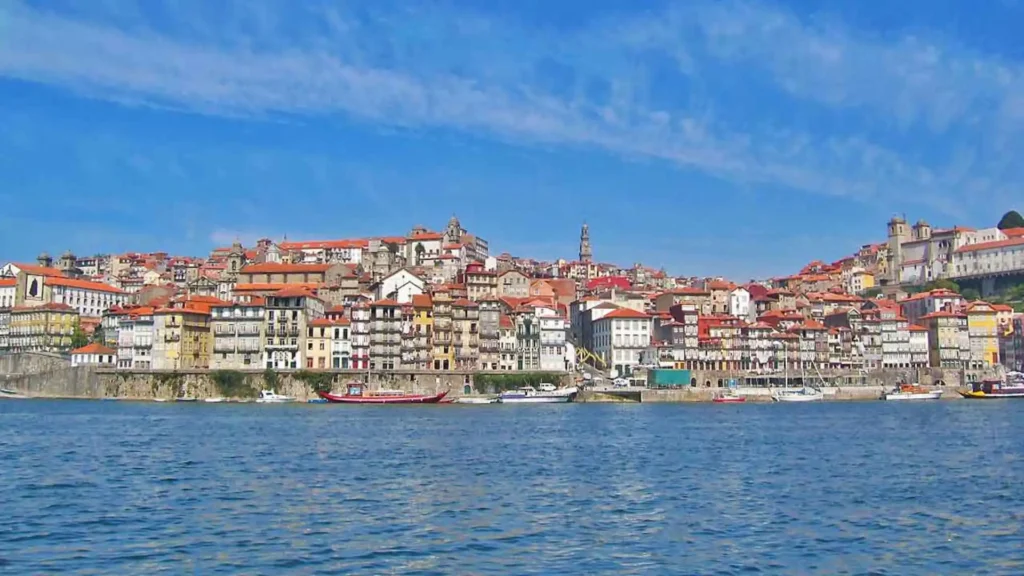
The historic centre of Porto, a maze of narrow streets and ancient buildings, is a testament to the city’s rich history.
As you wander through this UNESCO World Heritage site, you’re surrounded by a sense of timelessness.
The old buildings, with their traditional Portuguese tiles, called azulejos, tell stories of the past, each tile a piece of art in itself. The streets hum with the energy of daily life, as locals and visitors alike explore the quaint shops and cosy cafes.
One of the most iconic features of Porto’s historic centre is the Dom Luis I Bridge. This metal arch bridge, which spans the Douro River, is not only a vital link between the two sides of the city but also a magnificent example of 19th-century engineering.
Walking across the bridge, one is treated to panoramic views of the river and the city’s skyline, a blend of old and new, tradition and modernity.
Descending to the Ribeira district, the riverside area of Porto, the atmosphere changes. Here, colourful houses line the riverbank, creating a picturesque scene.
Small boats bob in the water, and the sound of lively music often fills the air. The Ribeira district is the heart and soul of Porto, a place where the city’s maritime heritage and vibrant culture come alive.
A visit here offers a deep connection to Porto’s spirit, a chance to experience the authentic charm of one of Portugal’s most beloved cities.
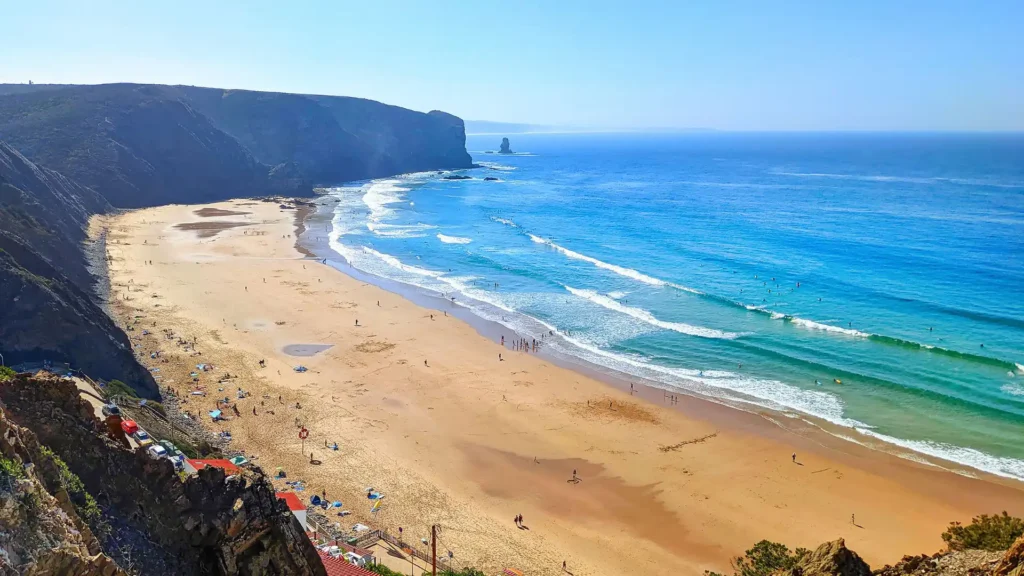
The Algarve, Portugal’s southernmost region, is famed for its stunning coastline, where the Atlantic Ocean meets golden sands and dramatic cliffs. The beaches here are not just stretches of sand; they are natural masterpieces.
Among these, Praia da Marinha stands out as a jewel. Surrounded by rugged cliffs, this beach offers a picture-perfect setting with its clear turquoise waters and soft, golden sand. It’s a paradise for sunbathers and a haven for those seeking a peaceful retreat by the sea.
Exploring the Algarve’s coastline further, one discovers a diverse array of beaches, each with its own unique charm. From bustling beach resorts to secluded coves, the region caters to all tastes.
The lively town of Lagos, for example, combines a vibrant nightlife with beautiful beaches like Meia Praia, a long stretch of sand ideal for long walks and water sports. Here, the joy of beach life is coupled with the allure of a historic town, offering a perfect blend of relaxation and exploration.
The Algarve is more than just a beach destination; it’s a region rich in culture and natural beauty. The traditional fishing villages along the coast offer a glimpse into the Algarve’s maritime heritage, while the inland areas reveal a different side of the region, with rolling hills and tranquil countryside.
A visit to the Algarve’s beaches is an immersion into a world where nature’s beauty is on full display, offering a serene escape and a chance to reconnect with the natural world.
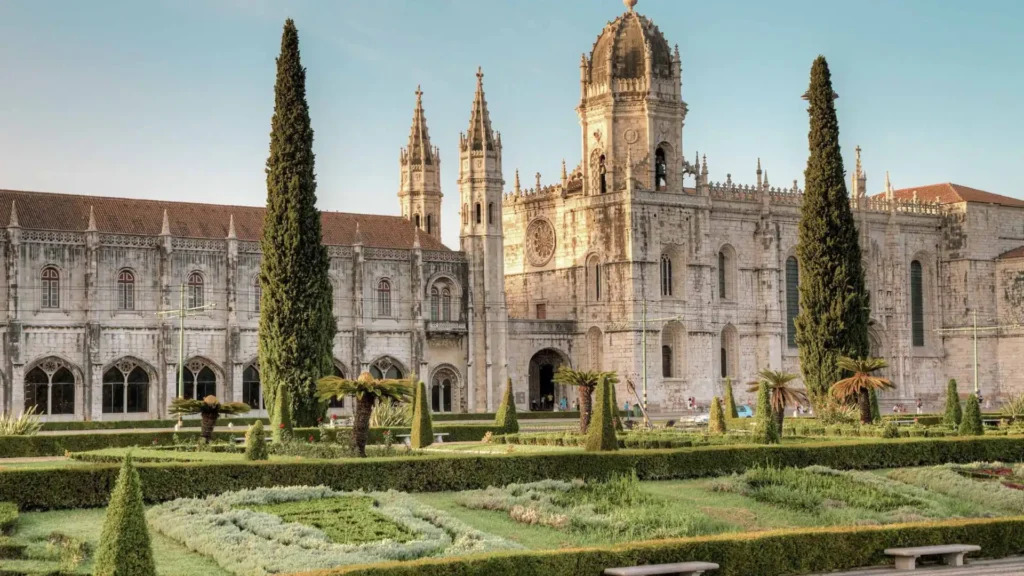
In the historic Belém district of Lisbon stands the Mosteiro dos Jerónimos, a monument to Portugal’s maritime past and a masterpiece of the Manueline style.
This monastery, with its sprawling, ornate façade, captures the imagination at first sight. The intricate stonework, featuring maritime motifs and symbols of exploration, reflects the era of discovery when Portugal was a global maritime power.
The interior of the monastery is equally impressive. The cloisters, a highlight of the visit, are a marvel of architectural design. The columns and arches create a serene yet grand atmosphere, inspiring a sense of awe and tranquillity.
Each corner of the cloisters reveals detailed sculptures and carvings, showcasing the skill and artistry of the craftsmen who built them.
Adjacent to the monastery is the famous Pastéis de Belém bakery, where visitors can taste the iconic Portuguese custard tarts known as pastéis de nata. These tarts, with their flaky pastry and creamy filling, offer a delightful experience, embodying the rich culinary tradition of Portugal.
A visit to the Mosteiro dos Jerónimos is not just an exploration of architectural beauty but also a journey through Portugal’s historical and cultural legacy.
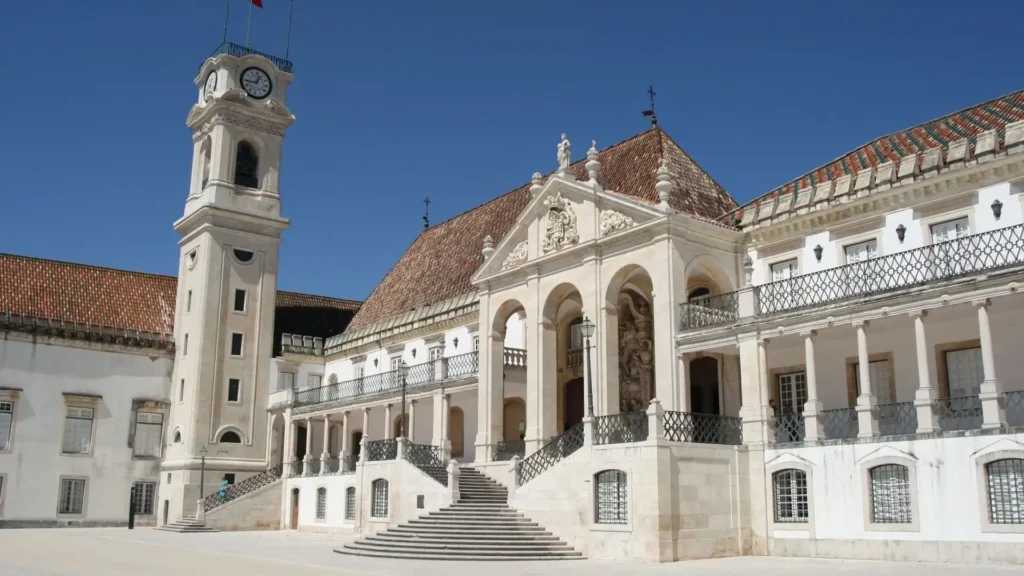
The University of Coimbra, perched atop a hill overlooking the city, is not only a centre of learning but also a symbol of Portugal’s rich academic history. Founded in 1290, it is one of the oldest universities in continuous operation in the world. The university’s historic buildings, with their grand façades and majestic interiors, tell the story of centuries of scholarly pursuit.
A highlight of the University of Coimbra is the Joanina Library. This Baroque masterpiece is a treasure trove of historical knowledge, housing rare manuscripts and books that date back several centuries.
The library’s ornate decoration, with gilded carvings and frescoed ceilings, is a testament to the importance of learning and culture in Portuguese society.
Exploring the university’s grounds, one feels the weight of history and the vibrancy of contemporary student life. The traditions of the past, such as the distinctive academic robes worn by students, blend seamlessly with the dynamic atmosphere of modern academia.
A visit to the University of Coimbra offers a unique insight into the world of Portuguese education, where the past and present coexist in a rich tapestry of knowledge and tradition.

In the northern city of Braga, the sanctuary of Bom Jesus do Monte stands as an enduring symbol of faith and beauty. This religious site, known for its stunning Baroque stairway, is a place of pilgrimage and architectural wonder.
The stairway, with its intricate carvings and serene water features, leads visitors on a journey not just to the sanctuary but also through a spiritual landscape.
The sanctuary itself, perched atop a hill, offers a tranquil refuge from the bustling world below. The interiors are adorned with religious artworks and symbols, creating a space for reflection and worship. The views from the top of the hill are breathtaking, overlooking the city of Braga and the surrounding countryside, a reminder of the harmony between nature and human creation.
The gardens surrounding Bom Jesus do Monte add another layer of beauty to the site. These well-manicured gardens, with their lush greenery and quiet paths, offer a peaceful escape.
Visitors can wander through the gardens, enjoying the calm and beauty of the natural world. The sanctuary of Bom Jesus do Monte is more than a religious site; it is a place of beauty, peace, and contemplation, offering a respite for the soul and a feast for the eyes.
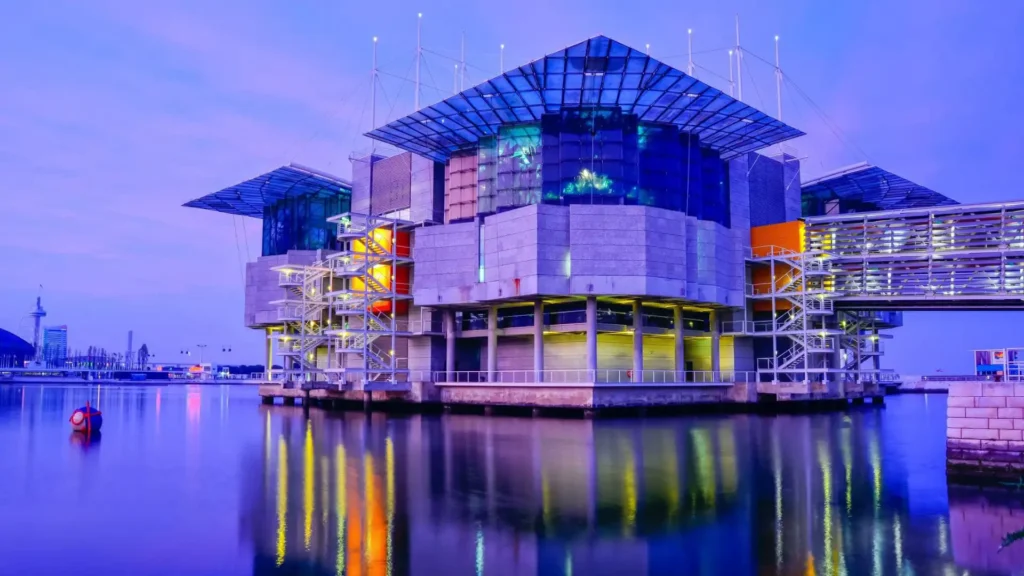
In Lisbon, the Oceanário de Lisboa stands as a modern marvel, a testament to the city’s commitment to understanding and preserving marine life.
As Europe’s largest indoor aquarium, it offers a journey into the depths of the oceans, revealing the diversity and beauty of marine ecosystems.
The central tank, a massive body of water, is home to a wide variety of fish, sharks, rays, and other sea creatures, showcasing the complexity of ocean life.
The design of the Oceanário allows visitors to experience the ocean from different perspectives. Surrounding the central tank are smaller habitats, each representing different marine environments from around the world.
From the icy waters of the Antarctic to the vibrant coral reefs of the tropical seas, these exhibits provide a glimpse into the varied and fascinating world beneath the waves.
The Oceanário is not just about observation; it’s about education and conservation. Through interactive exhibits and educational programs, it raises awareness about the importance of the oceans and the need to protect this vital ecosystem.
A visit here is an immersive experience, leaving visitors with a deeper appreciation for the wonders of the marine world and the importance of preserving it for future generations.
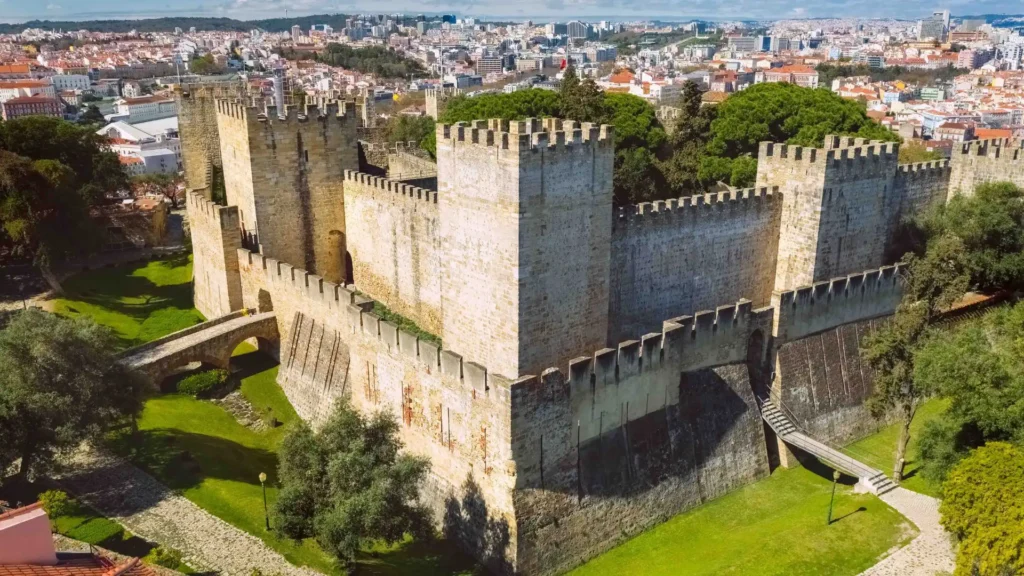
Overlooking the city of Lisbon, the São Jorge Castle is a window into the past, offering a panoramic view that stretches across the city to the Tagus River.
This ancient fortress, with its Moorish origins, has stood witness to centuries of history. Its sturdy walls and imposing towers speak of a time when it served as a stronghold for various rulers who governed the city.
The castle’s interior is a labyrinth of stone walls and open spaces, inviting exploration. Wandering through its courtyards and ramparts, visitors can imagine the bustle of medieval life within these walls.
The camera obscura in one of the towers offers a unique view of Lisbon, projecting live images of the city onto a viewing screen, blending old technology with the modern cityscape.
The true magic of São Jorge Castle lies in its views. From the ramparts, one can gaze out over the red-tiled rooftops of Lisbon, the winding streets, and the blue waters of the Tagus River.
The view is a living tapestry of the city, a blend of history and modernity, nature and architecture. Visiting São Jorge Castle is not just a historical journey; it’s an opportunity to connect with the spirit of Lisbon, a city that has endured and thrived through the ages.
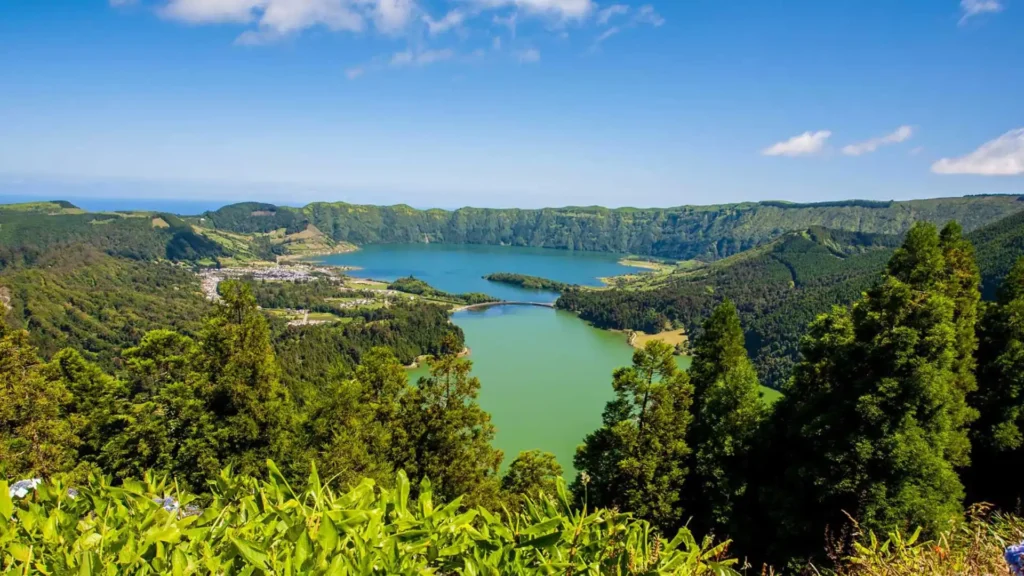
Far from the mainland, in the midst of the Atlantic Ocean, lie the Azores, a group of nine volcanic islands that are part of Portugal. This archipelago is a world apart, where nature’s force and beauty are on full display.
Each island, with its lush landscapes and unique ecosystems, offers a different experience, a chance to explore the unspoiled beauty of one of Europe’s last great wildernesses.
São Miguel, the largest island, is known for its stunning crater lakes, like Lagoa do Fogo and Sete Cidades, each a vivid canvas of blues and greens.
The island’s geothermal activity is another highlight, with hot springs and geysers dotting the landscape, offering a glimpse into the earth’s fiery heart.
São Miguel’s capital, Ponta Delgada, with its charming cobblestone streets and historic architecture, provides a contrast to the island’s natural wonders.
Faial, another island in the archipelago, is famous for its volcanic craters and the Capelinhos Volcano, which last erupted in the 1950s. The island’s marina, painted with murals by visiting sailors, adds a splash of colour and a sense of connection to the wider world.
Faial is also a gateway to other islands in the central group, like Pico, known for its towering volcano and exquisite wines.
The Azores offer a range of outdoor activities, from hiking and birdwatching to whale watching and diving. The waters around the islands are some of the best in the world for seeing whales, dolphins, and other marine life in their natural habitat.
The rich biodiversity of the islands, both on land and sea, makes the Azores a haven for nature lovers and adventurers alike.